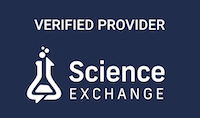OncoBone attended the European Calcified Tissue Society (ECTS) Annual Meeting on May 23-26 in Innsbruck, Austria. In ECTS, new data on basic and clinical research are shared, and OncoBone presented new data about validation of the small-animal DXA iNSiGHT in a poster presentation titled ‘Correlation analysis of small-animal DXA for bone parameters and total body, fat and lean mass’.
OncoBone is a distributor of the small-animal DXA iNSiGHT in Europe. This poster was presented together with the Korean-based manufacturer OsteoSys and DT&CRO who performed the validation work with iNSiGHT. A summary of the presented data is described below.
Benefits of DXA technology in preclinical studies
DXA technology utilizes variable absorption of X-rays by different body components, which allows reliable analysis of body composition and bone mineral density (BMD). This makes DXA a powerful technology for not only in bone field, but also related to metabolic diseases such as diabetes and obesity. DXA can reliably analyze BMD, bone mineral content (BMC), fat mass (FM) and lean mass (LM). In the poster presented at ECTS, we demonstrated correlations between these parameters obtained with DXA to more traditionally used methods.
Validation of DXA over traditionally used methods
The performance of iNSiGHT small-animal DXA for measuring BMD, BMC, FM and LM in mice and rats was tested to confirm their correlation to traditionally used extraction methods. Unlike commonly used traditional methods such as ash weight and crude fat weight measurements, DXA can be used for longitudinal monitoring of live anesthetized animals during the study. We made the following comparisons:
Traditional method DXA technology
Body weight: scale vs DXA
Fat mass: crude fat weight vs FM by DXA
Lean mass: lean mass weight vs LM by DXA
Total body (TB) BMC: bone ash weight vs BMC by DXA
Femur BMC: BMC by µCT vs BMC by DXA
The obtained DXA values showed strong correlation with body weight, fat and lean mass, summarized in the table below. BMC obtained with DXA showed strong correlation with BMC calculated from µCT analysis and with bone ash weight in both live and euthanized animals. Similar high correlations were observed in both mice and rats, demonstrating that DXA can be used to analyze reliably changes in the above-mentioned parameters in commonly used small laboratory animals.

Table 1. Summary of Pearson correlations between DXA and traditionally used methods
Precision, accuracy and easiness of analysis
Non-invasive iNSiGHT DXA has fast scanning time, minimal radiation exposure for small animals, and radiation-free environment for researchers. It offers an optimized method for in vivo imaging of small animals and allows longitudinal studies with repeated scannings. iNSiGHT DXA presents ultimate high-resolution images of 100 μm, and even higher 30 µm resolution with 4x magnification in digital radiography (DR) mode. DR imaging and Color Mapping for lean and fat distribution are optimized for visual analysis and assessment. User-defined ROI-based analysis with multiple areas allows researchers more flexibility and more precise analysis in their research.
Key features of iNSiGHT include:
- Easy to use
- High precision and accuracy
- Fully shielded cabinet safe for users
- Longitudinal measurements in anesthetized animals
- Safe low-dose radiation, allowing repeated measurements
If you are interested to learn more, please contact us at info@oncobone.com.


